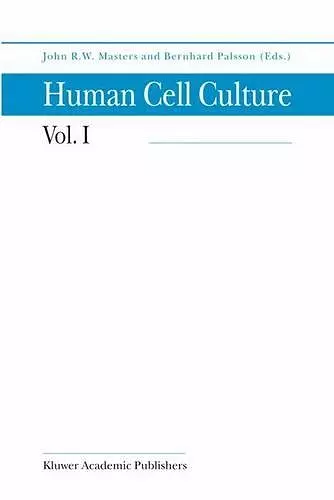Cancer Cell Lines Part 1
John Masters editor Bernhard Ø Palsson editor
Format:Paperback
Publisher:Springer
Published:13th Nov '13
Currently unavailable, and unfortunately no date known when it will be back

Springer Book Archives
Continuous cell lines derived from human cancers are the most widely used resource in laboratory-based cancer research. The first 3 volumes of this series on Human Cell Culture are devoted to these cancer cell lines.Continuous cell lines derived from human cancers are the most widely used resource in laboratory-based cancer research. The first 3 volumes of this series on Human Cell Culture are devoted to these cancer cell lines. The chapters in these first 3 volumes have a common aim. Their purpose is to address 3 questions of fundamental importance to the relevance of human cancer cell lines as model systems of each type of cancer: 1. Do the cell lines available accurately represent the clinical presentation? 2. Do the cell lines accurately represent the histopathology of the original tumors? 3. Do the cell lines accurately represent the molecular genetics of this type of cancer? The cancer cell lines available are derived, in most cases, from the more aggressive and advanced cancers. There are few cell lines derived from low grade organ-confined cancers. This gap can be filled with conditionally immortalized human cancer cell lines. We do not know why the success rate for establishing cell lines is so low for some types of cancer and so high for others. The histopathology of the tumor of origin and the extent to which the derived cell line retains the differentiated features of that tumor are critical. The concept that a single cell line derived from a tumor at a particular site is representative of tumors at that site is naïve and misleading.
ISBN: 9789401738248
Dimensions: unknown
Weight: unknown
293 pages
Softcover reprint of the original 1st ed. 2002